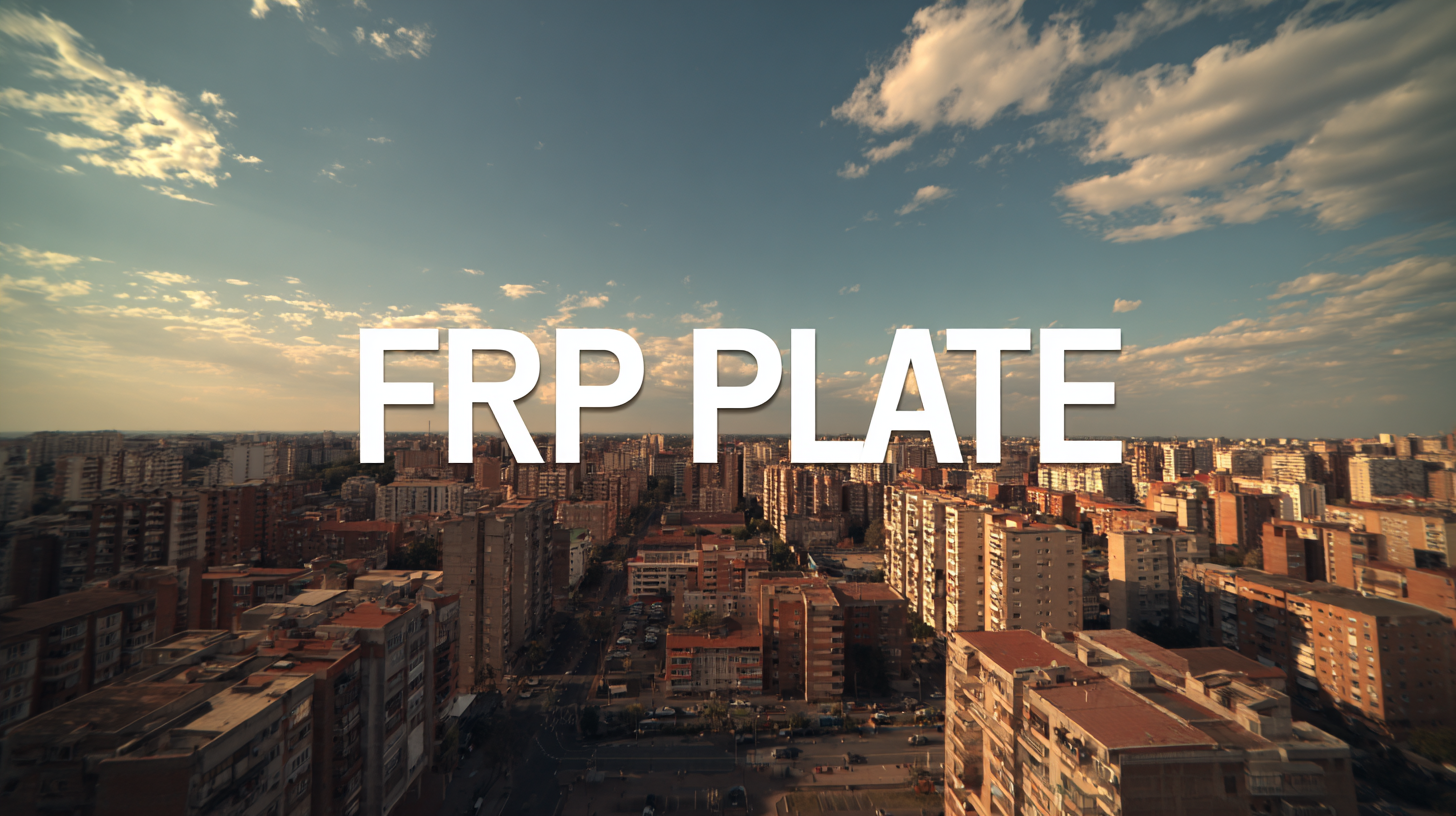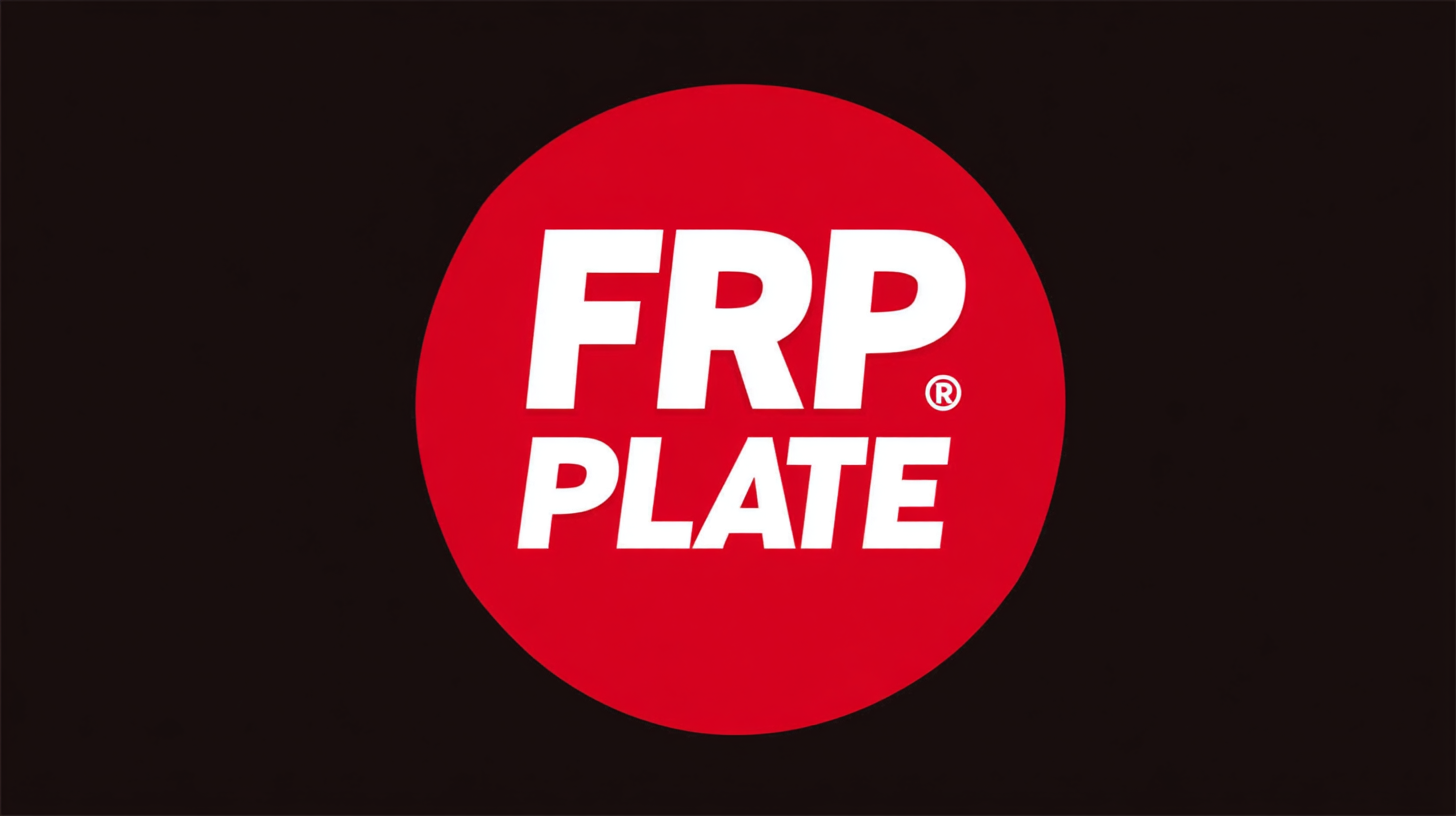In recent years, the demand for innovative materials in construction and manufacturing has surged, with the global fiberglass reinforced plastics (FRP) market projected to reach over $20 billion by 2025, according to industry reports. Among the various offerings in this sector, the FRP Flat Plate stands out for its unique advantages, including unparalleled strength-to-weight ratios, corrosion resistance, and versatility in application. These characteristics have made FRP Flat Plates the preferred choice for a wide range of projects, from infrastructure to industrial settings. However, selecting the right manufacturer is crucial to ensuring quality and performance. In this blog, we will explore the top seven reasons why investing in the best FRP Flat Plate is essential for your projects and provide guidance on how to identify a reliable manufacturer in this competitive market.

FRP (Fiber Reinforced Polymer) flat plates are gaining popularity in construction projects due to their outstanding durability and lightweight properties. According to a recent report by the Global FRP Composites Market, the demand for FRP materials in construction is expected to increase by over 20% annually through 2025. One reason for this surge is FRP's exceptional resistance to corrosion, making it an ideal choice for structures exposed to harsh environments, such as coastal areas or industrial sites. This longevity not only reduces maintenance costs but also extends the lifespan of the structures.
Tips: When considering the use of FRP flat plates, assess your project's specific requirements for load-bearing capacity and environmental conditions to maximize the benefits of this material. Additionally, investing in high-quality FRP products can significantly enhance the overall performance and safety of your structures.
Another notable advantage of using FRP flat plates is their ease of installation. Their lightweight nature allows for quicker handling and reduced labor costs. A study published by the Construction Industry Institute highlights that projects utilizing FRP materials can see significant reductions in overall construction time, as installation often requires fewer tools and equipment.
Tips: Proper training for your team on FRP handling and installation techniques can lead to even greater efficiency and project success. Always collaborate with experienced FRP manufacturers to ensure you’re choosing the best products for your specific needs.
| Benefit | Description | Application |
|---|---|---|
| Lightweight | FRP flat plates are significantly lighter than traditional materials, reducing transportation and installation costs. | Commercial and residential construction |
| Corrosion Resistance | They resist chemicals and environmental stressors, making them ideal for harsh conditions. | Industrial plants and marine environments |
| High Strength-to-Weight Ratio | These plates provide excellent strength while maintaining a lightweight profile. | Structural applications in bridges and buildings |
| Durability | FRP flat plates have a long lifespan, reducing the need for frequent replacements. | Long-term infrastructure projects |
| Design Flexibility | They can be manufactured in various shapes and sizes to meet specific project requirements. | Custom architectural elements |
| Thermal Insulation | FRP materials provide good thermal insulation, enhancing energy efficiency. | Energy-efficient building designs |
| Eco-Friendly | FRP products can be made from recycled materials and are recyclable themselves. | Sustainable construction practices |
When selecting the best FRP flat plates for your projects, it's essential to understand the key features that make them stand out. One crucial aspect is their strength-to-weight ratio. FRP materials are known for their lightweight nature while still providing high tensile strength, making them ideal for various applications, including reinforced concrete (RC) slabs where weight reduction can lead to structural efficiency. This feature allows for more straightforward handling and installation, ultimately saving time and labor costs on the job site.
Another vital characteristic to consider is resistance to environmental factors. The best FRP flat plates exhibit excellent durability against moisture, chemicals, and UV radiation, ensuring longevity and minimal maintenance. This resilience is particularly advantageous in areas subjected to harsh conditions, enhancing the overall performance of the construction. Additionally, advancements in predictive modeling, such as the use of kernel density estimation and XGBoost for assessing punching shear strength in FRP-RC slabs, underscore the evolving technologies that can support more intelligent material selection, ensuring that you make informed decisions for your projects.

When considering materials for construction and industrial projects, the choice between FRP (Fiber Reinforced Plastic) flat plates and traditional materials often comes down to performance, durability, and cost-effectiveness. FRP flat plates are emerging as a superior alternative due to their lightweight nature and high resistance to corrosion. Unlike traditional materials such as steel and aluminum, FRP does not rust or corrode, which significantly reduces maintenance costs over time. This makes FRP a practical choice for environments subject to moisture and harsh chemicals.
Furthermore, FRP flat plates offer excellent strength-to-weight ratios compared to conventional materials. This means that for the same amount of material, FRP can provide greater structural support without the added bulk. This characteristic is particularly beneficial in projects where weight limitations are critical, such as in aerospace or marine applications. Additionally, the flexibility in design provided by FRP allows for customization, which traditional materials often lack, enabling engineers and architects to realize innovative project visions with ease. Thus, for forward-thinking projects, the advantages of FRP flat plates over traditional materials are becoming increasingly evident.
Fiber Reinforced Polymer (FRP) flat plates have emerged as a popular choice across various industries due to their unique properties and practical applications. In the construction sector, FRP flat plates are increasingly used for structural reinforcement. Their lightweight nature combined with high tensile strength allows for significant reductions in the overall weight of structures, making them ideal for enhancing the load-bearing capacity of bridges and buildings without compromising safety.
In the manufacturing industry, FRP flat plates are revolutionizing the way products are designed and produced. Their corrosion resistance makes them perfect for environments that expose materials to harsh chemicals, such as in chemical processing plants. This durability extends the lifespan of equipment and reduces maintenance costs. Moreover, their versatility allows for customization in size and shape, catering to specific industry needs, ranging from aerospace components to automotive parts. As industries continue to prioritize efficiency and sustainability, the adoption of FRP flat plates is expected to grow, paving the way for innovative applications and improved performance standards.

To ensure the longevity of your FRP flat plates, proper care and maintenance are essential. First and foremost, regular cleaning is crucial. Use mild soap and water along with a soft cloth or sponge to gently wipe down the surface. Avoid harsh chemicals or abrasive materials that can scratch or damage the resin. This simple routine will help keep your plates looking pristine and performing at their best, enhancing their lifespan.
Additionally, it’s important to inspect your FRP flat plates periodically for any signs of wear or damage. Look for cracks, chips, or any discoloration that could indicate a problem. If you notice any issues, it’s better to address them promptly before they escalate. Storing your FRP plates in a cool, dry environment away from direct sunlight will also contribute to their durability, helping to prevent potential degradation from UV exposure. By following these maintenance tips, you can enjoy the full benefits of your FRP flat plates for many years to come.
TradeManager
Skype
VKontakte

